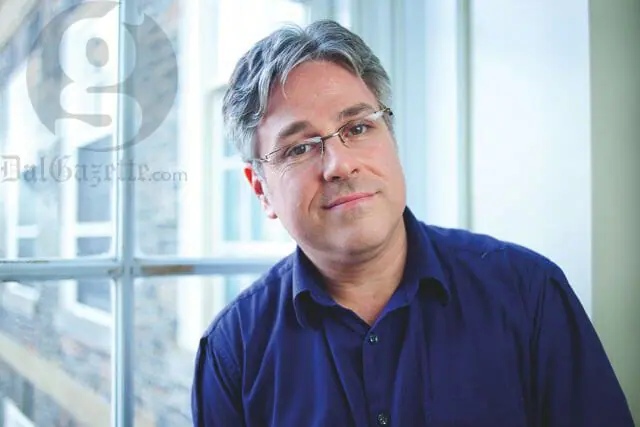
When the administration’s blog sounds like only half the story and the Dalhousie Faculty Association (DFA) seems to be silent in comparison, what can students believe?
That difference is due largely to resources: the administration has a communications team of 23 employees, three of whom are working on negotiating updates, while the DFA has one full-time communications officer.
So naturally, the images that students are getting of each side are going to be disparate. Ryan Robski, a DSU senate representative, says that discrepancy is a major worry for students. “We hear two different things,” he says.
“Just not knowing what to believe, what the situation is—that’s the concern.”
While the administration has been able to email students and has been update their blog consistently throughout negotiations, the DFA has been less communicative to students.
On Feb. 27, the DFA invited selected student leaders to a luncheon––a step Robski says is in the right direction.
“These (meetings) could be happening more, they could be more open to other student questions in a broader forum as opposed to by invitation. But I think they’re taking positive steps,” he says.
DFA president Anthony Stewart said at the meeting the image of the DFA is changing as negotiations go on.
“You start to see the administration less and you start to see me more. So I, and the people whom I’m supposed to be representing, end up getting blamed for all this.”
Stewart says the administration’s communications have been spinning the story: for example, in saying that the DFA walked away from the table of Feb. 15.
Charles Crosby, spokesperson for Dal administration and one of three communications workers dedicated to disseminating information on the negotiations, says the allegation is unfounded.
“We’re all sharing information as we understand it,” he says. “There’s no spin involved: we’re simply saying what we know.”
Robski is also the president of the Dal Association of Graduate Students (DAGS). He says graduate students have a more moderate opinion of the two sides, being both students and people who have begun to think about their pensions.
“Graduate students specifically understand the difficulty that’s here,” he says.
“But without speaking to individual opinions, I think graduate students—and all students—are most concerned when they don’t see negotiations going on.”
Aaron Beale has seen that frustration as well.
“People are pissed off. They’re worried, concerned,” he says.
“And I think helpless is the most concerning for me. I don’t feel like students should feel helpless, when we are the number one users of this institution.”
Beale is involved with the Nova Scotia Public Information Research Group (NSPIRG) at Dal and was present at the last student leader meeting with the DFA. He characterizes the administration’s letters to students as “disturbing.”
“It’s incredibly tactically amazing, but also manipulative and scary,” he says.
Beale says the DFA’s methods of communicating with students needs work too.
“Ultimately, the interests of the DFA and the students are the same,” he says. “But we don’t know it, and the DFA doesn’t act like it.”
He also says the DFA needs to change their strategy to gain public opinion.
“If they want students on board, they should contextualize their struggle in things that students will care about,” he says.
But Max Ma, the DSU representative on the Board of Governors, says the DFA has no favour in public opinion.
“They’ve been relying almost entirely on the Gazette to give their side of the story, because they cannot count on their members,” he says, explaining that it’s impossible for the DFA to get every one of 870 faculty members to say the same thing. “The PR battle cannot be won by the DFA. They don’t have the resources and they don’t have the public sympathy,” he says. “But keeping that in mind, they’re doing well with the resources they have.”
Ma, Beale and Robski each agree on one point, though: the DSU needs to become the primary source of information for students.
Robski says it’s the responsibility of the student union to take a more active role. “What I would like to see, personally, is the DFA and the administration empower the student union to be the communicator to students, so that it is coming from one source,” he says.
If the DSU took on that role, he says, students could have a solid source of unbiased information, without judgment on either side. “The best tool in place right now is the DSU,” he says.
But Beale says the DSU should take a mobilizing role, rather than an informational one.
“I stand by my statement that if students wanted to, and were organized under the student union, we could stop the strike,” he says. “We have a student union. We shouldn’t feel un-empowered.”

Recent Comments